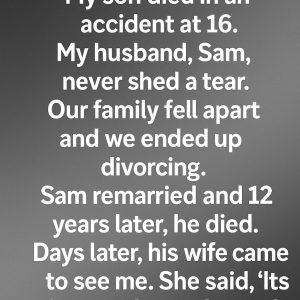A massive and fast-moving fire struck the densely populated hillside community of Pamplona Alta in San Juan de Miraflores, Lima, on Saturday afternoon, turning what began as a localized blaze into a sweeping disaster. The area, known for its tightly packed improvised homes built from lightweight and highly flammable materials, created conditions that allowed the flames to spread rapidly. Residents, many of whom were inside their homes or working nearby, first noticed smoke rising between structures before the fire advanced up the slope. Within minutes, the flames had jumped from dwelling to dwelling, overwhelming neighbors who tried to slow its progress with buckets of water and improvised tools. The geography of the hillside made it even harder to contain, funneling wind and heat upward as firefighters fought to navigate narrow, winding paths. While authorities eventually managed to control the fire’s forward momentum, the damage had already cut across a large portion of the settlement, leaving the community shaken and exposed.
Early estimates from firefighters and local media suggest that dozens — and possibly more than a hundred — homes sustained significant damage or were completely destroyed. Given the density of Pamplona Alta, where multiple families often share single structures or live in clusters of small rooms connected by makeshift corridors, the human impact is immense. Hundreds of residents poured into the streets carrying what few possessions they could salvage: mattresses, plastic bins, school uniforms, bags of rice, framed photos, a pet in a laundry basket. Some watched in stunned silence; others wept openly as walls collapsed and roofs buckled behind them. Emergency shelters began forming spontaneously along the roadsides, with tarps, blankets, and donated water appearing within the first hours. Officials on the ground emphasized that these numbers are preliminary, as full assessments will require navigating still-hot debris and contacting families who have temporarily dispersed for safety. What remains certain is that many residents are now without homes, facing the uncertainty of where they will sleep and how they will rebuild.
One of the most alarming developments occurred when flames reached what officials believe may have been a clandestine pyrotechnics workshop hidden within the neighborhood. Residents reported hearing a series of pops and small explosions just as the fire surged, sending sparks and debris outward. The presence of explosive materials significantly intensified the blaze, complicating firefighting efforts and increasing the danger for both responders and civilians still fleeing the area. Investigators are now examining this workshop site as a potential point of origin. The possibility that the fire began — or escalated — because of illegally stored fireworks underscores the precarious conditions often present in informal urban settlements. These neighborhoods can unintentionally harbor high-risk activities due to economic pressures, lack of formal regulation, and the constant need for residents to create income through unconventional means. Authorities have stated that determining the exact cause of the fire will be a priority in the coming days, not only to establish accountability but also to help prevent future disasters of similar scale.
As smoke continued to drift over the hillside, emergency teams remained fully deployed throughout the night and into the next day. Firefighters, municipal workers, community leaders, and volunteers worked together to assess structural damage, identify urgent needs, and arrange temporary resources for displaced families. Humanitarian organizations began coordinating food distribution, medical evaluations, and psychological support for individuals experiencing trauma from the sudden loss of their homes. Local schools and community centers are being evaluated as potential short-term shelters, though capacity remains limited. While government agencies are mobilizing additional assistance, much of the immediate response has come from neighbors themselves — people offering space in their homes, sharing meals, and locating missing relatives. This rapid, instinctive cooperation reflects a deep-rooted resilience in Pamplona Alta, a community accustomed to overcoming hardship through collective strength. Even so, the scale of the destruction means the recovery process will be long and complex, requiring sustained attention well beyond the initial emergency response.
Moments like this serve as stark reminders of how fragile stability can be, especially in vulnerable communities where a single spark can upend the lives of hundreds. The fire has exposed not only physical devastation but also the emotional toll of watching one’s home — a lifetime of work and memory — vanish in minutes. Yet within the devastation, acts of mercy and solidarity quickly emerged: strangers guiding children through smoke-filled paths, neighbors shielding elderly residents, firefighters risking their safety amid explosions, and volunteers arriving with water before authorities even called for donations. These gestures reveal an enduring truth about disaster: when chaos strips life down to essentials, what remains is the strength people find in one another. For Pamplona Alta, rebuilding will demand time, resources, and persistent support, but the community’s determination offers a foundation as strong as any material structure. The fire’s destruction is immense, but the collective response — neighbors standing side by side, refusing to let anyone face the aftermath alone — points to the possibility of renewal, even in the shadow of profound loss.





